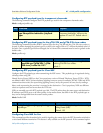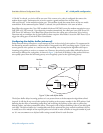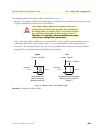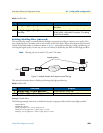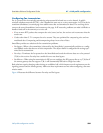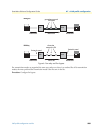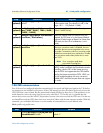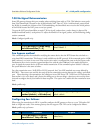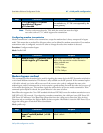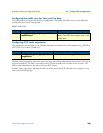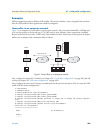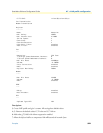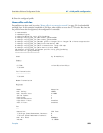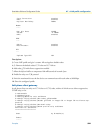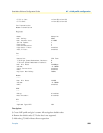
VoIP profile configuration task list 588
SmartWare Software Configuration Guide 47 • VoIP profile configuration
T.38 No-Signal Retransmission
Some SIP gateways change their port number when switching from audio to T.38. This behavior causes prob-
lems if the SmartNode is located on the A-Side behind a NAT. Due to T.30 is a unidirectional. protocol and
the B-Side is normally the initiator of the T.30 handshaking, the SmartNode never receives the initial packets
of the B-Side because the NAT ports are not yet opened.
To open the NAT ports SmartWare no sends T.38 ‘no-signal’ packets when a codec change is detected. By
default SmartNode sends 3 such packets. To adjust the number of ‘no-signal’ packets, use the following config-
uration command.
Mode: Configure/profile voip
Fax bypass method
This command specifies the method for notifying the remote device that the RTP Stream has switched to a
voice-band FAX transmission. This feature is only available on the SIP protocol. If the command option ‘v150-
vbd’ is selected, a re-invite is sent even if the current voice coder is configured the same as the fax bypass coder.
Furthermore the re-invite contains a gpmd-attribute line with the value ‘vbd=yes’ in the media description
part. It signals the remote device of the new media transmission. If the command option ‘default’ is selected,
the system behavior is the same as before.
For a fax transmission over a VoIP (SIP or H.323) network, the Cisco NSE standard uses events defined by
RFC2833. These events are used for the setup of the fax transmission starting between the calling- and called-
peer. Upon detecting a fax transmission, the called-peer issues NSE Event 192. NSE Event 192 indicates the
data stream is via a voice band, and it forces the calling-peer to do two things—deactivate voice activity detec-
tion and reconfigure the de-jitter buffer for data reception. The option ‘nse’ enables this fax transmission stan-
dard.
Mode: profile voip
Configuring fax failover
When using fax transmission in SIP, it is possible configure the SIP gateway to first try to use T.38 and to fall
back to a high-rate codec, if the remote gateway does not support T.38. This can be configured as follows:
Mode: profile voip <pf-name>
Step Command Purpose
1
[name] (pf-voip)[name]#fax nosig-
nal-retransmission [1...5]
Sets how many times a T.38 ‘nosignal’ is retrans-
mitted. Default: 3
Step Command Purpose
1
[name] (pf-voip)[name]#fax bypass-
method {default | v150-vbd|nse}
Specifies the fax bypass signaling method.
Default: default
Step Command Purpose
1
[name] (pf-voip)[pf-name]# fax
transmission 1 relay t38-udp
Define T.38 UDP as the first fax transmission
method to try



